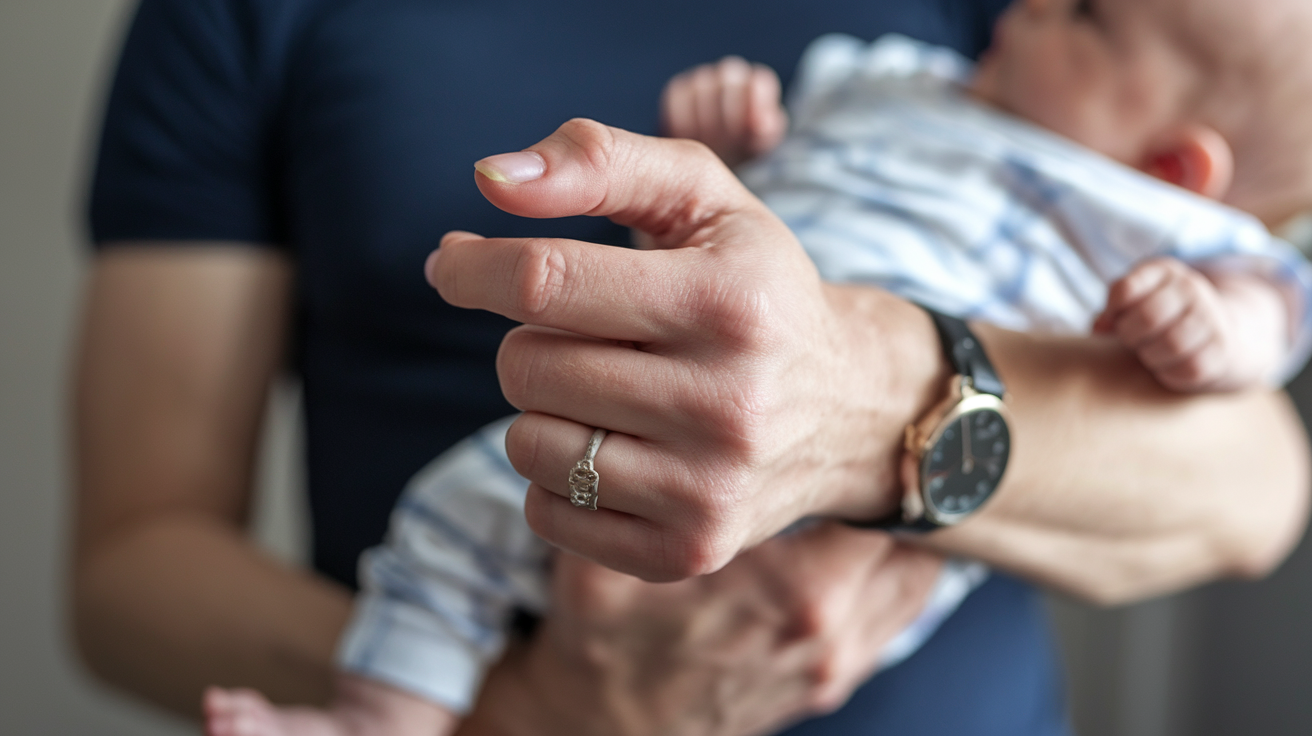Mommy (and Daddy!) Thumb: Understanding Thumb and Wrist Pain in New Parents

February 17, 2025
Bringing home a new baby is full of special moments—but it also brings new physical demands. If you’ve started noticing sharp or aching pain along the thumb side of your wrist, especially when lifting, gripping, or holding your child, you may be experiencing Mommy Thumb.
This condition, also known as De Quervain’s Tenosynovitis, affects both mums and dads—so it’s sometimes called “new parent wrist.” It’s common, treatable, and best addressed early.
What Is Mommy Thumb?
Mommy Thumb happens when the tendons at the base of the thumb become inflamed or irritated, usually due to overuse. These tendons run through a narrow sheath, and repetitive movement causes friction, leading to pain and swelling.
This condition is especially common in new parents due to frequent lifting, holding, feeding, and carrying—all of which place repeated stress on the wrist and thumb.
Common Symptoms to Look Out For
- Pain at the base of the thumb or along the wrist
- Swelling or tenderness near the thumb joint
- A snapping or catching sensation during movement
- Difficulty gripping or lifting objects
- Pain that worsens when lifting your baby or twisting your wrist
If these symptoms sound familiar, it’s time to take a closer look at your daily habits—and find ways to support your wrist during recovery.
What Causes Mommy Thumb in New Parents?
Certain parenting activities are more likely to trigger symptoms. These include:
- Lifting your baby under their arms using your thumbs as leverage
- Holding bottles or breastfeeding with the wrist in a bent position
- Repeated twisting during nappy changes
- Carrying car seats in one hand with the wrist bent or loaded
All of these tasks rely on small, repetitive movements that can wear down tissues over time.
How to Ease and Prevent Mommy Thumb
Change Your Lifting and Holding Techniques
Instead of lifting your baby by hooking your thumbs under their arms, try scooping them with your hands under their back and hips. Use your whole arm to support their weight, not just your hands.
Support Your Arms During Feeding
Use pillows to rest your baby’s weight during breastfeeding or bottle-feeding, allowing your hands and wrists to stay in a neutral, relaxed position.
Use Splints or Supports When Needed
Wearing a wrist or thumb brace—especially during repetitive tasks or at night—can help reduce strain and support healing. We can help guide you toward a good off-the-shelf support, or design a custom-made splint that fits comfortably and works for your routine.
Apply Ice and Reduce Inflammation
A cold compress for 10–15 minutes at a time can help reduce swelling and pain. Anti-inflammatory medications may also help if approved by your doctor.
Try Gentle Stretches and Strengthening
Specific wrist and thumb exercises can reduce tightness and improve endurance in the muscles around the affected tendons. Always check with a therapist before beginning new exercises to make sure they’re safe for your condition.
When to Get Help from a Specialist
If rest and home strategies aren’t enough—or if pain is getting worse—it’s time to speak with a hand therapist.
At Hands for Living, we regularly work with parents managing Mommy Thumb. Your therapy may include:
- Gentle manual therapy to reduce tightness and improve movement
- A custom splint to support healing
- Ergonomic education for baby care activities
- Personalised exercises to strengthen your hand safely
The earlier we intervene, the more likely you are to avoid long-term tendon issues or the need for more advanced treatment.
Parenting Without Pain Is Possible
Caring for a baby puts your body through new challenges—but pain shouldn’t be part of your day. With the right guidance and support, Mommy Thumb can be managed effectively. You can lift, cuddle, and care for your child without worrying about your wrist each time.
We’re here to support your recovery—so you can focus on your family with comfort and confidence.